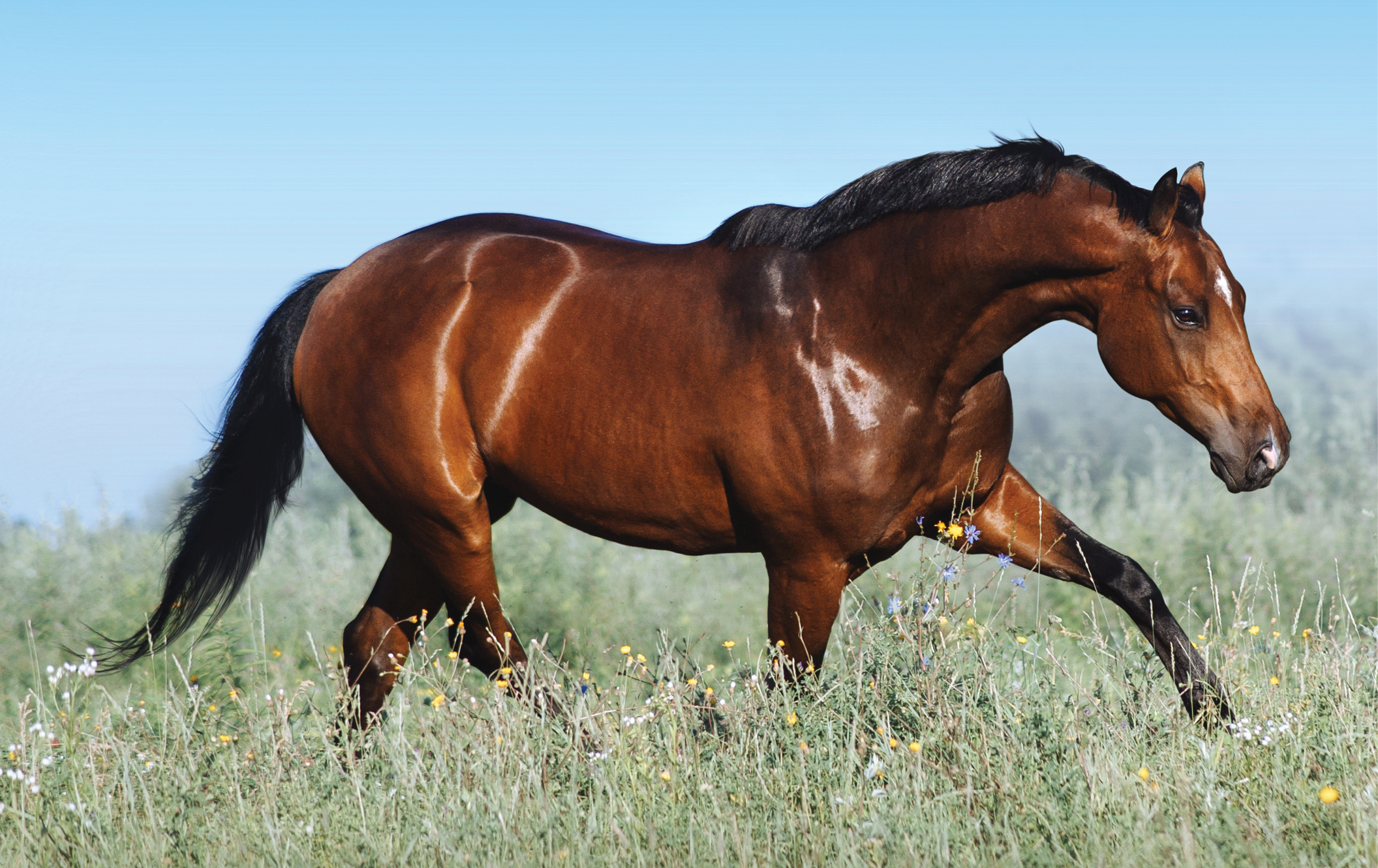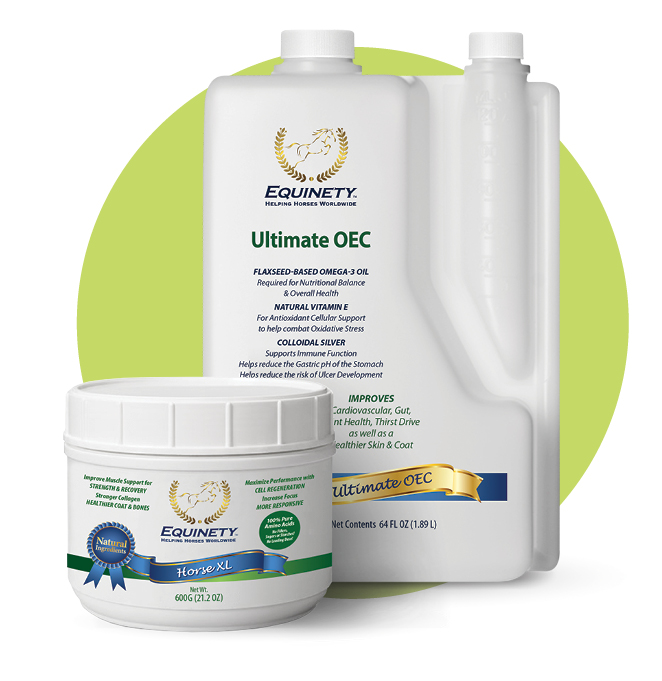
Where Do Amino Acids Come From?
Horses’ bodies manufacture 12 of the 22 essential amino acids they need. The other 10 amino acids come from the grass, grain, supplements, and hay they eat. Their digestive tracks break down the food into amino acids and use them to build whatever elements the body needs.
What Happens If Horses Don’t Get Enough?
Lactating mares, growing colts, and horses in intense training have the highest protein requirements, and thus need the most amino acids. If horses do not consume enough of the amino acids their bodies need to regenerate cells from their stomachs to their muscles to their joints, they’re more susceptible to injury and recover from physical exertion more slowly. Common signs of an amino-acid shortage are weight loss, poor hair and hoof growth, slow growth in young horses, and lost pregnancies in broodmares.

Supplementing Amino Acids
Equinety Horse XL offers eight amino acids—lysine, arginine, ornithine, glycine, leucine, isoleucine, valine, and glutamine—with no fillers, sugars, starches, or soy. These amino acids are specifically formulated to stimulate the horse’s pituitary gland, releasing the necessary hormones to help the body repair at a cellular level. (teamequinety.com.)




